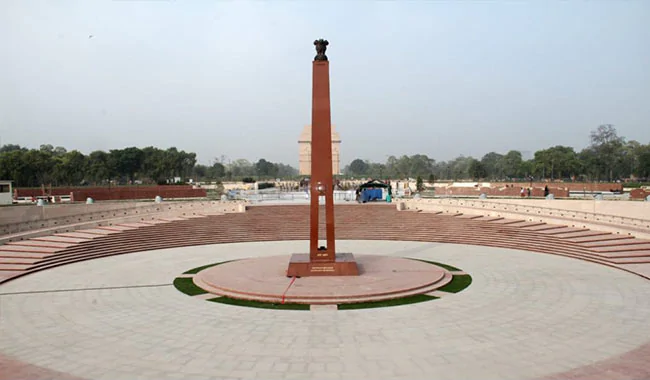Important Facts For Prelims
Relocating the Amar Jawan Jyoti to National War Memorial
- 22 Jan 2022
- 3 min read
Why in News
In a historic move, Amar Jawan Jyoti merged with the National War Memorial flame.
Key Points
- Amar Jawan Jyoti:
- Established in 1972, it was to mark India’s victory over Pakistan in the 1971 War, which resulted in the creation of Bangladesh.
- The then Prime Minister Indira Gandhi had inaugurated it on Republic Day 1972, after India defeated Pakistan in December 1971.
- The eternal flame at the Amar Jawan Jyoti underneath India Gate in central Delhi was an iconic symbol of the nation’s tributes to the soldiers who have died for the country in various wars and conflicts since Independence.
- The India Gate memorial was built by the British government in memory of the British Indian Army soldiers who lost their lives between 1914-1921.
- Reasons for the Relocation:
- The names inscribed on the India Gate are of only some martyrs who fought for the British in World War 1 and the Anglo Afghan War & thus is a symbol of our colonial past.
- The names of all Indian martyrs from all the wars, including “1971 and wars before and after it are housed at the National War Memorial.
- National War Memorial:
- Inaugurated in 2019, it is around 400 meters from India Gate.
- The layout of the structure comprises four concentric circles, named:
- the "Amar Chakra" or Circle of Immortality,
- the "Veerta Chakra" or Circle of Bravery,
- the "Tyag Chakra" or Circle of Sacrifice and
- the "Rakshak Chakra" or Circle of Protection.
- The proposal for a National War Memorial was first made in the 1960s.
- The memorial is dedicated to soldiers who laid down their lives defending the nation during the Sino-Indian war in 1962, Indo-Pak wars in 1947, 1965 and 1971, Indian Peace Keeping Force Operations in Sri Lanka and in the Kargil Conflict in 1999.
- The National War Memorial also commemorates the soldiers who participated and made supreme sacrifices in United Nations peace-keeping missions, Humanitarian Assistance Disaster Relief (HADR) operations, counterinsurgency operations and Low-Intensity Conflict Operations (LICO).







